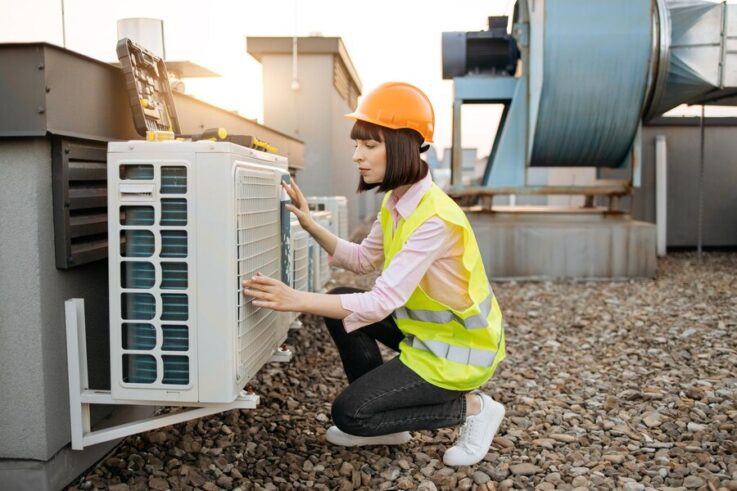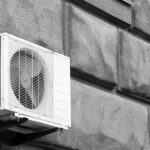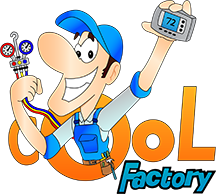
Boost Home Comfort: Energy-Efficient HVAC Tips
In the quest for a cozy home environment that doesn’t break the bank, optimizing your HVAC system can make a significant difference. Energy-efficient HVAC upgrades not only enhance comfort but also slash utility costs. From smart thermostat integration to strategic insulation, these improvements offer long-term benefits. This guide dives into effective strategies for maximizing home comfort while minimizing energy consumption. Discover how small changes can lead to substantial savings and a more sustainable living space.
Benefits of Energy-Efficient HVAC Upgrades
Investing in energy-efficient HVAC upgrades offers numerous advantages beyond mere cost savings. These upgrades significantly enhance home comfort by ensuring more consistent heating and cooling throughout the year. By optimizing energy usage, efficient systems reduce environmental impact, lowering carbon footprints and contributing to a sustainable future.
Moreover, improved efficiency often translates to quieter operation and fewer breakdowns, enhancing overall system reliability. For homeowners, the reduced energy bills and potential increase in property value make energy-efficient HVAC upgrades a sound long-term investment. Additionally, many governments offer incentives or tax credits for adopting eco-friendly home improvements, further offsetting initial costs.
Key Components of an Energy-Efficient HVAC System
Several key components distinguish an energy-efficient HVAC system. First and foremost, modern units utilize advanced technologies such as variable-speed motors and high-efficiency compressors, which consume less energy while maintaining optimal performance. Proper insulation and sealing ensure minimal energy loss, maximizing the system’s effectiveness.
Additionally, programmable thermostats enable precise temperature control, allowing homeowners to adjust settings based on occupancy and schedule, further reducing energy consumption. Regular maintenance, including air filter replacements and duct cleaning, ensures the system operates at peak efficiency. Together, these components form a cohesive system that not only saves energy but also enhances indoor air quality and comfort levels throughout the home.
Choosing the Right Smart Thermostat for Your Home
Selecting the optimal smart thermostat can significantly enhance your home’s energy efficiency and comfort. Start by assessing your household’s needs and preferences—whether you prioritize remote access, scheduling flexibility, or integration with other smart devices. Models like Nest and Ecobee offer intuitive interfaces and learning capabilities that adapt to your lifestyle, optimizing temperature settings automatically. Consider compatibility with your HVAC system to ensure seamless installation and operation.
Additionally, features such as geofencing can adjust temperatures based on your proximity to home, further reducing energy waste. Investing in a smart thermostat not only reduces utility bills but also contributes to sustainable living by minimizing energy consumption.
The Role of Proper Insulation in Energy Savings
Proper insulation acts as a vital barrier against heat loss in winter and heat gain in summer, crucial for maintaining a comfortable indoor environment while conserving energy. Insulating attics, walls, and floors effectively traps heat indoors during colder months and prevents excessive heat penetration during hotter seasons. Quality insulation materials, like fiberglass, cellulose, or foam, provide excellent thermal resistance, ensuring consistent temperatures throughout your home.
Beyond temperature control, adequate insulation reduces strain on HVAC systems, prolonging their lifespan and lowering maintenance costs. By addressing insulation needs, homeowners can achieve significant energy savings and enjoy enhanced comfort year-round.
How Regular HVAC Maintenance Boosts Efficiency
Regular HVAC maintenance plays a crucial role in optimizing system performance and enhancing overall energy efficiency in your home. By scheduling routine inspections and tune-ups with a qualified technician, you ensure that your heating, ventilation, and air conditioning components are operating at peak efficiency. This proactive approach helps identify and address minor issues before they escalate into major problems, preventing costly repairs and potential breakdowns during peak seasons.
Moreover, cleaning and replacing filters, checking refrigerant levels, and lubricating moving parts are essential tasks that can significantly improve airflow and reduce energy consumption. Ultimately, investing in regular HVAC maintenance not only extends the lifespan of your system but also maintains a comfortable indoor environment year-round while lowering utility bills.
Exploring Energy-Efficient Heating Options
When it comes to energy-efficient heating, homeowners today have a range of innovative options to consider. High-efficiency furnaces and boilers utilize advanced technologies to minimize energy waste and maximize heat output, providing consistent warmth while reducing operational costs. Heat pumps offer a versatile solution by efficiently transferring heat between indoor and outdoor environments, suitable for both heating and cooling needs.
For those seeking sustainable alternatives, solar heating systems harness renewable energy from the sun to supplement traditional heating methods. Each option varies in cost, installation requirements, and effectiveness depending on climate and home size. Exploring these energy-efficient heating options allows homeowners to make informed choices that align with their comfort needs and environmental goals, ensuring long-term savings and reduced carbon footprints.
Effective Strategies for Cooling Efficiency
Maintaining a cool and comfortable home during hot months often hinges on effective cooling strategies. Start by ensuring your HVAC system is properly sized and regularly maintained to optimize efficiency. Consider installing programmable thermostats that adjust temperatures automatically based on your schedule, reducing unnecessary cooling when you’re away. Enhance airflow by regularly cleaning or replacing filters and ensuring vents are unobstructed. Additionally, improve insulation and seal ducts to prevent cool air from escaping and hot air from infiltrating, maximizing your system’s effectiveness.
Explore advanced cooling technologies such as ductless mini-split systems or evaporative coolers, which offer targeted cooling for specific areas without the energy losses associated with traditional central air systems. Finally, utilize shading techniques like planting trees or installing awnings to reduce solar heat gain through windows, further lowering your cooling needs and energy bills.
Integrating Solar Solutions with HVAC Systems
Integrating solar energy with your HVAC system can significantly reduce reliance on traditional power sources and lower long-term operating costs. Start by installing solar panels to generate electricity, which can power your HVAC system during peak usage times. Consider solar water heating systems that supplement your HVAC’s hot water needs, reducing energy consumption further. Additionally, solar-powered attic fans can improve ventilation, reducing the workload on your HVAC system.
Explore hybrid HVAC systems that combine solar energy with conventional electricity, offering flexibility and efficiency. Monitor and optimize your solar system’s performance regularly to ensure maximum savings and environmental benefits. Government incentives and tax credits often make solar integration financially feasible, making it a sustainable choice for homeowners looking to reduce their carbon footprint and energy bills simultaneously.
Maximizing Comfort with Zoning Techniques
Zoning techniques revolutionize home comfort by dividing your living space into distinct temperature zones, each independently controlled. This approach ensures that rooms are heated or cooled based on occupancy and usage patterns, rather than uniformly throughout the house. By installing multiple thermostats and dampers in different zones, homeowners can customize temperatures according to specific needs, enhancing comfort while optimizing energy usage.
Zoning not only minimizes energy waste by heating or cooling only occupied areas but also prevents overworking the HVAC system, extending its lifespan and reducing maintenance costs. It’s a smart solution for larger homes or those with varying climate preferences among occupants.
Evaluating the Cost vs. Savings of HVAC Upgrades
When considering HVAC upgrades, assessing the initial investment versus long-term savings is crucial. Energy-efficient systems may have higher upfront costs but offer significant savings through reduced energy bills over their lifespan. Factors like energy efficiency ratings (SEER for cooling, AFUE for heating), maintenance requirements, and local utility incentives play pivotal roles in calculating returns on investment.
Consulting with HVAC professionals helps in understanding payback periods and potential savings, ensuring informed decisions that align with both comfort and financial goals. Additionally, modern systems often come with advanced features like programmable thermostats and smart controls, further enhancing efficiency and convenience while lowering overall operational costs.
Government Incentives for Energy-Efficient Homes
Government incentives for energy-efficient homes play a pivotal role in encouraging homeowners to adopt sustainable practices and technologies. These incentives often come in the form of tax credits, rebates, or grants, which can significantly offset the initial cost of upgrading HVAC systems and improving home insulation. For instance, federal tax credits are available for installing energy-efficient heating and cooling systems, such as high-efficiency heat pumps or solar HVAC solutions. These credits can amount to substantial savings on both installation and operating costs over time.
Moreover, many state and local governments offer additional incentives tailored to regional energy goals and climate conditions. These incentives might include cash rebates for upgrading to ENERGY STAR-certified appliances or funding programs that provide low-interest loans for energy-efficient home improvements. By leveraging these incentives, homeowners not only reduce their carbon footprint but also enjoy immediate financial benefits, making energy-efficient upgrades more accessible and attractive. Keeping abreast of current incentive programs through government websites or local energy authorities ensures homeowners can make informed decisions to maximize savings and environmental impact.
Embracing energy-efficient HVAC upgrades is not just about enhancing comfort—it’s a smart investment in your home’s future. By implementing these tips, from smart thermostat integration to exploring government incentives, you can achieve significant savings on energy bills while reducing your environmental footprint.
Whether you’re upgrading your heating system or improving insulation, each step contributes to a more sustainable and comfortable living space. Take the first step towards a more efficient home today. Contact Cool Factory at 888-831-8797 to learn more about how our expert HVAC services can transform your home into a haven of comfort and savings. Start enjoying a more efficient home environment tomorrow!






